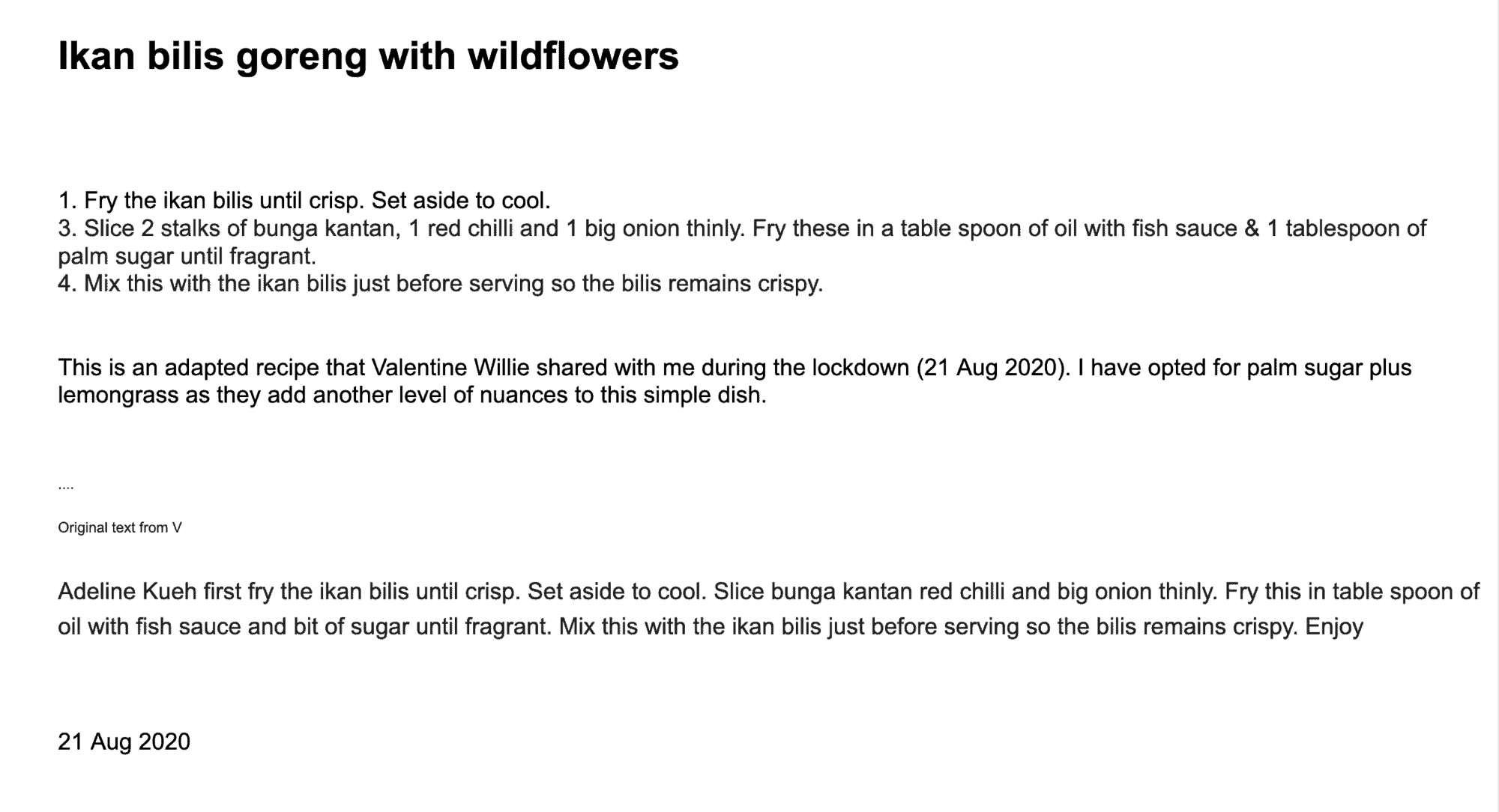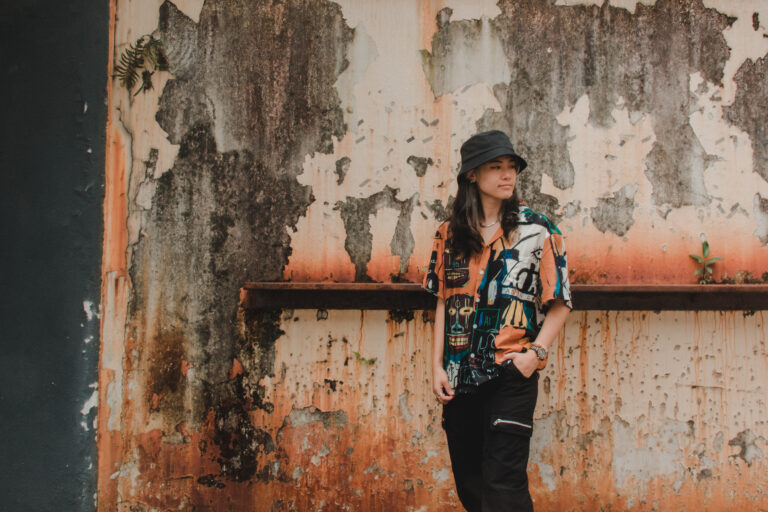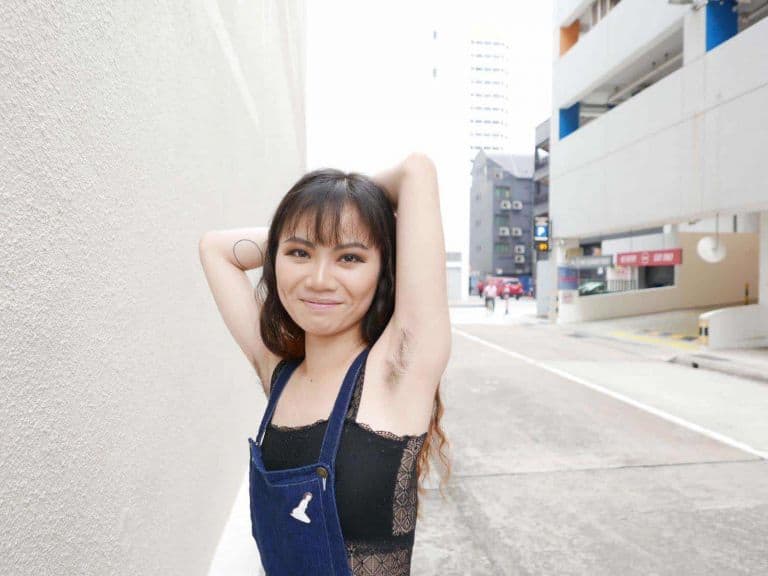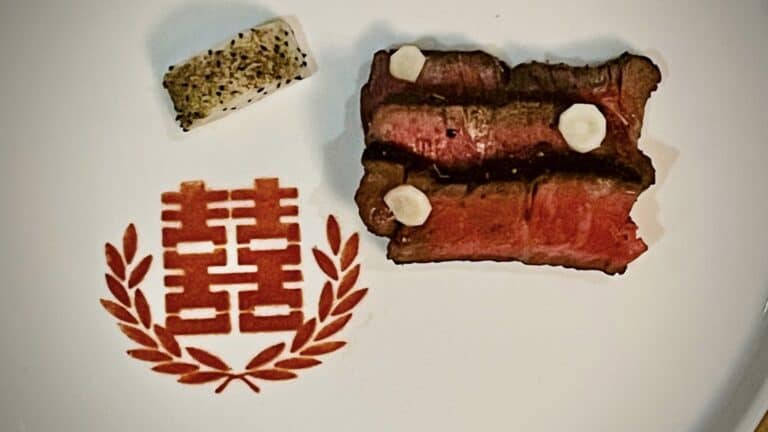Malaysia has just moved into its third nationwide lockdown on 1 June, amid a surging wave of COVID-19 cases that have hit record levels. Here in Singapore, we are coming to the end of the third week of Phase 2 (Heightened Alert) measures, in the wake of our own fresh outbreak of COVID-19 cases after months of zero to single-digit daily cases. As the residents of both countries, once again, stay home to stay safe more than a year after this dread disease first struck, we’re sharing “cross-border” recipe of sorts – one that veteran Malaysian art dealer and Creative Director of Ilham Gallery, Valentine Willie, shared with Singapore-based artist Adeline Kueh (a.k.a. Lulu, her alter ego) back in August 2020. Lulu has added a few of her own personal twists to Valentine’s original recipe, which she sent to me by email – here’s a screenshot:

As with many recipes shared among family and friends, it’s a little short on precise measurements and detailed instructions, but is an easy and forgiving recipe that’s very amenable to agak-agak guess-timation. As usual, I road-tested the recipe and, all I can say is, this is one dish you’ll definitely want to try making. It’s delicious on its own, just paired with a simple bowl of white rice, but is capable of not merely holding its own, but also enhancing the flavours of other local dishes like curries, when served as an accompaniment to them.
The main ingredient is ikan bilis, a much-loved ingredient in Southeast Asia. These small dried anchovies are pungent, rich with the scent of the sea and packed with umami flavours. Fry these in oil until they’re golden brown and crispy and set them aside.

Another key ingredient is bunga kantan, or the torch ginger flower. Bunga kantan is what gives many iconic Southeast Asian dishes their distinctive flavour. A true “roadside beauty”, as Lulu calls it, the torch ginger (Etlingera elatior) grows in tropical and sub-tropical regions, from Hawaii to Congo, but is native to Malaysia and Indonesia. Although the unopened flower bud (shown above) is the most commonly used part in local cooking, the entire plant – leaf, flower, fruit and seed – is edible, the secrets to their culinary use known mainly to the indigenous peoples living in and around the rain forests of the Malay archipelago.
The recipe calls for two bunga kantan buds, as well as one red chili and one large onion, to be finely sliced. Lulu decided to add two stalks of lemongrass to Valentine’s original recipe – an inspired touch as its bright citrus aroma and flavour serves as the perfect complement to the gingery scent and flavour of the bunga kantan. The lemongrass is not sliced but merely bruised, lightly smashed in a mortar and pestle, to release its natural oils and juice.

Fry the bruised lemongrass stalks, sliced onion, chili and bunga kantan in a pan with a tablespoon of oil until fragrant, adding fish sauce and a little sugar to taste (Lulu opted to use palm sugar, or gula melaka instead of white sugar, adding an even richer and more nuanced note to this dish).

Mix the stir-fried ingredients together with the fried ikan bilis just before serving, to ensure that the ikan bilis remains crispy. And that’s it – delicious, aromatic, crispy and crunchy Fried Ikan Bilis Goreng with Roadside Beauties, graciously shared with us by Lulu and Valentine!

If you follow artist Adeline Kueh on social media, you will know that she is a talented and prolific cook. The time and effort she takes to prepare delicious dishes for family and friends in her personal life relate to notions that also inform her artistic practice. Adeline is interested in exploring ideas surrounding intimacy, intimate labour and acts of care within the home. Her works are often imbued with a sense of desire and longing, acting as modern-day totems that explore personal histories and overlooked moments through rituals and objects.
Recently, we commissioned Adeline to create a new work for Living Legacies: In Sickness and In Health, a digital collaboration with the National Heritage Board for the Singapore HeritageFest 2021. Adeline’s work, Roadside Beauties and Other Tales of Healing explores homemade herbal remedies that incorporate the principles of traditional medicine, as well as family recipes that are passed down through informal networks. The work is also an extension of her ongoing research into edible flowers and herbs that can be found growing wild along the streets of Singapore. Through acts of foraging, preparing and sharing the herbal teas and soups in her work, she once again explores ideas of intimacy or intimate labour within the home, considering how such forms of care can be brought to the fore into the public realm.
______________________________________
Editor’s Note: To access the recipes for homemade herbal remedies crowdsourced by Adeline that boost immunity, relieve “heatiness” and cleanse the body, visit Roadside Beauties and Other Tales of Healing at Living Legacies: In Sickness and In Health.











